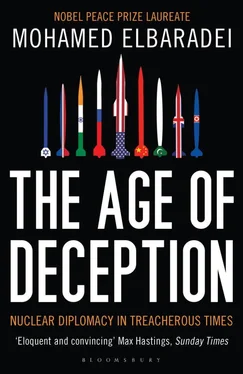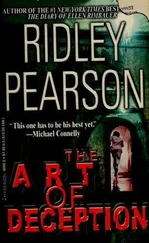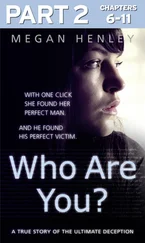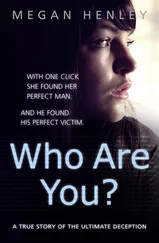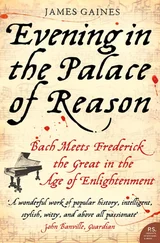The final reason not to lose faith that diplomacy and dialogue can prevail as the strategy for dealing with nuclear crises is based on a point of logic: the alternative is unacceptable. Of course, optimism is a far cry from certainty. Nuclear diplomacy is a tedious, wrenching business. But the road ahead is clear. Ultimately, we are a single, conjoined human family; like it or not, we are in this together. The only quest that makes sense, the only quest worth pursuing, is toward collective security.
Nuclear diplomacy is a complex and long-term undertaking. Yet the world is a better place because of the intensive labor and sustained commitment of people throughout the international nuclear community: diplomats, inspectors, scientists, lawyers, lab workers, journalists, activists, and academics, leaders from every sector and at every level, and in particular my colleagues, the dedicated men and women of the International Atomic Energy Agency. Many have been a source of inspiration and encouragement in the writing of this book; many of their ideas, observations, and anecdotes have enlivened and enriched these pages and, while it is impossible to name every person, each one has my sincere gratitude.
A few people deserve special mention for their contributions to this project.
I am especially indebted to Laban Coblentz, my chief collaborator in the conceptual development and writing of this narrative, without whom this book would not have been what it is. An extraordinarily gifted writer, an innovative thinker, and an unfailingly cheerful and loyal friend, Laban found ways to burn the candle at more locations than should be humanly possible. I must also single out his most valuable asset, his wife, Angeline, a former IAEA colleague, without whose patience, support, and discipline this book could not have been completed.
The writing also benefited greatly from the assistance of a number of IAEA colleagues—Jacques Baute, Vilmos Cserveny, Olli Heinonen, Herman Nackaerts, Tariq Rauf, Laura Rockwood, and David Waller—who, graciously and on their own time, supplemented my memories of what happened when and where, adjusted and clarified my lawyer’s explanations of nuclear technology, and answered many questions to ensure the accuracy of the accounts. Eva Moosbrugger, my longtime dedicated assistant and confidante at the IAEA, generously donated countless evenings to carefully transcribe my rambling reflections from recorded dictation into intelligible text, and prodded me to record my thoughts even in the busiest of times. Ewelina Hilger, researcher par excellence, made similarly exhaustive efforts on her own time to track down supporting documentation, confirm coordinates and chronologies, and follow up with various IAEA and industry experts on important details. Stephanie Zupancic, my current assistant, followed me uncomplainingly to Cairo; le Gers, France; and many other places, helping me stay in touch no matter how remote my location or how challenging my schedule.
Most of the themes and concepts explored in these pages were first articulated in speeches and writings during my tenure as IAEA Director General. In addition to those already named, key contributors to the molding and expression of these ideas include Richard Murphy, Melissa Fleming, Graham Andrew, Geoffrey Shaw, and Ian Biggs.
Noah Lukeman, my agent, approached me years ago with the idea of writing this book, understanding how important it was for these messages to reach a broader audience, and gently refused to let it drop off my radar screen. I am especially grateful to Noah for helping to find the book a genuinely supportive home at Metropolitan Books. Metropolitan’s publisher, Sara Bershtel, has been an energetic and caring advocate, supplying crucial advice and encouragement, while my editor, Riva Hocherman, proved to be an ideal partner in shaping and sharpening the focus of the manuscript. Riva is, hands down, the finest editor a first-time author could hope for: her intelligence in grasping what I wanted to convey, her uncanny craftsmanship, her passion for getting the ideas just right and staying on message helped to turn the narrative into a finely tuned, compelling read.
No author could wish for a more supportive and loving family. My wife and children, as well as my mother, brothers, and sisters, have always been there for me during the highs and lows of my time as Director General. My son, Mostafa, in his thoughtful and understated way, was always present to gently challenge my intellectual ability, and when I needed him to fix an Internet connection or come to the rescue of my rudimentary software skills, his “geek” IT talents were always available. My daughter, Laila, and my son-in-law, Neil Pizey, unfortunately both lawyers like me, read multiple versions of the narrative, churning out pages of perceptive questions, helping me to tease out the technical details that needed more explanation for the educated lay reader—Laila in her direct and irreverent way and Neil in his more soft-spoken and probing manner.
Nothing I put into words will be sufficient to describe how very fortunate I am to have Aida, my wife, as my partner, friend, and alter ego. Throughout the emotional, mental, and physical stress that came with the episodes described in this book, as well as the labor of its writing, she has been my unwavering ally, my honest advisor, and my sanctuary.
Finally, I would like to pay homage to my late father, who, even in his absence, remains an inspiration to me for many of the values I hold dear.
MOHAMED ELBARADEIserved as Director General of the International Atomic Energy Agency from 1997 to 2009. He was awarded the 2005 Nobel Peace Prize, together with the IAEA, and has also been honored with the Indira Gandhi Prize for Peace, Disarmament and Development; the Nile Collar; and the Roosevelt Institute’s Four Freedoms Award. Founder of the Egyptian opposition movement the National Association for Change, ElBaradei lives in Cairo.

First published in Great Britain 2011
Copyright © 2011 by Mohamed ElBaradei
All rights reserved
First published in the United States in 2011 by Metropolitan Books,
Henry Holt and Company, LLC, 175 Fifth Avenue, New York, New York 10010
The moral right of the author has been asserted
No part of this book may be used or reproduced in any manner whatsoever without written permission from the Publisher except in the case of brief quotations embodied in critical articles or reviews
Bloomsbury Publishing Plc
50 Bedford Square
London WC1B 3DP
www.bloomsbury.com
Bloomsbury Publishing, London, Berlin, New York and Sydney
A CIP catalogue record for this book is available from the British Library
ISBN 978 1 4088 1597 7 (hardback edition)
10 9 8 7 6 5 4 3 2 1
ISBN 978 1 4088 1700 1 (trade paperback edition)
10 9 8 7 6 5 4 3 2 1
Printed in Great Britain by Clays Ltd, St Ives plc
The IRT-5000, a water-cooled, pool-type research reactor supplied by the Soviets; and the Tammuz-2, a French-supplied pool-type research reactor.
The exact quote from Article VI of the NPT: “Each of the Parties to the Treaty undertakes to pursue negotiations in good faith on effective measures relating to cessation of the nuclear arms race at an early date and to nuclear disarmament, and on a treaty on general and complete disarmament.”
Article IX of the treaty defines a nuclear-weapon state as “one which has manufactured and exploded a nuclear weapon or other nuclear explosive device prior to 1 January 1967.” At the time, the Soviet Union was one of five such states; but after its break-up, only Russia retained its status as a nuclear-weapon state. The three other former Soviet Union countries that had nuclear weapons relinquished them.
Читать дальше
